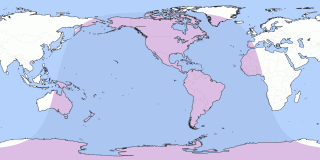Aug 16, 2027 at 11:36 pm
Max View in 70°13'11.4"N, 162°21'34.5"W
| Global Event: | Penumbral Lunar Eclipse |
|---|---|
| Local Type: | Penumbral Lunar Eclipse, in 70°13'11.4"N, 162°21'34.5"W |
| Begins: | Mon, Aug 16, 2027 at 11:23 pm |
| Maximum: | Mon, Aug 16, 2027 at 11:36 pm -0.553 Magnitude |
| Ends: | Tue, Aug 17, 2027 at 1:03 am |
| Duration: | 1 hour, 40 minutes | All times shown on this page are local time. |
Eclipses and Transits Visible in 70°13'11.4"N, 162°21'34.5"W
| Eclipse Visibility From 70°13'11.4"N, 162°21'34.5"W | Visibility Worldwide | ||
|---|---|---|---|
| Mar 13–14, 2025 Total Lunar Eclipse | Total Lunar Eclipse |  | |
| Mar 2–3, 2026 Total Lunar Eclipse | Total Lunar Eclipse |  | |
| Aug 12, 2026 Partial Solar Eclipse | Total Solar Eclipse |  | |
| Aug 27, 2026 Penumbral Lunar Eclipse | Partial Lunar Eclipse |  | |
| Aug 16–17, 2027 Penumbral Lunar Eclipse | Penumbral Lunar Eclipse |  | Note: Click on the date link for details in 70°13'11.4"N, 162°21'34.5"W, or the path map image for global details. Currently shown eclipse is highlighted. |
Next total solar eclipse visible in 70°13'11.4"N, 162°21'34.5"W
Next annular eclipse visible in 70°13'11.4"N, 162°21'34.5"W
